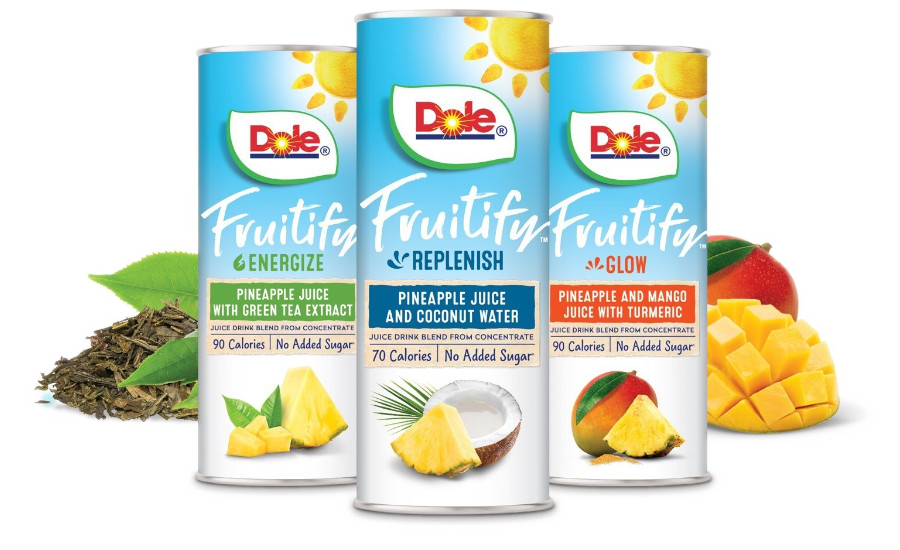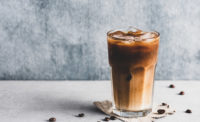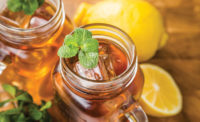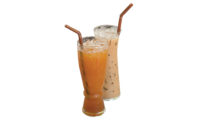Whether they are in search of energy or refreshment, consumers no longer need to wait for the coffee to brew or the tea bag to steep. An abundance of ready-to-drink (RTD) coffee and tea options is on call to quench their collective thirst.
With convenience ever top of mind with consumers, RTD coffee and tea spell opportunity for dairy and other food and beverage processors. In fact, dollar sales within the combined RTD shelf-stable coffee and tea categories reached $7,680.6 million during the 52 weeks ending Sept. 5, 2021, according to data from Chicago-based market research firm IRI (U.S. multi-outlet w/c-store: grocery, drug, mass market, convenience, military, and select club and dollar retailers). That represents a 9.3% dollar sales increase over the previous 52-week period. On the refrigerated side, dollar sales climbed 13.1% during the same timeframe to reach $2,662.5 million.
More than a cup of joe
RTD coffee now is not only the third most popular coffee consumption format but also the fastest-growing segment within the total coffee category, notes Matt Swenson, director of coffee for Nestlé USA, Arlington, Va. And the segment encompasses much more than plain old brewed coffee in a convenient, portable format.
“We’ve seen cold brew continue to grow its market share within the broader RTD coffee space,” he adds. “We are seeing a generational shift; younger consumers are choosing cold coffee as they come into coffee-drinking age versus previous generations choosing hot coffee as their first cup. Additionally, we’re seeing a more refined set of flavors coming out that are inspired by seasonal cues and local coffee shop creations.”
Swenson notes that consumers and retailers have embraced seasonal and limited-time-only flavors in Nestlé USA’s Chameleon cold-brew concentrate lineup, so the brand recently launched additional fall and winter concentrate flavors.
What’s more, flavor variety is among several current RTD coffee trends that Gretchen Koch, senior director of marketing for Emeryville, Calif.-based Peet’s Coffee, calls out. She points to a 2021 report from global market research firm Mintel stating that 35% of consumers cite “variety of flavors” as a main reason for drinking cold-brew coffee.
“Flavor variety allows consumers to experiment and find the flavors that appeal most to them,” she says.
Another trend Koch cites is consumers’ need for balanced indulgence. Consumers continue to be focused on health, but they want a treat, too.
“The RTD coffee category is viewed as a highly indulgent coffee format that offers the widest variety of flavors for consumers,” Koch notes. “We are increasingly seeing that having that ‘treat’ is the No. 1 purchase driver for RTD coffee, especially as consumers are going through the COVID pandemic — they are reporting increased desire for comfort and indulgence.”
Peet’s Coffee caters to consumers’ desire for both flavor variety and indulgence with its Peet’s Blended RTD coffee lineup. Made with real cream, real sugar, and 100% single-origin Colombian coffee, the beverage comes in Coffee & Cream, Vanilla Crème, Caramel Dulce, and Chocolate Truffle flavors. Peet’s Coffee expanded the line’s availability in 2021; it is now offered in California, Oregon, Washington, Colorado, and Texas.
International Delight, a brand of Broomfield, Colo.- and White Plains, N.Y.-based Danone North America, also is appealing to consumers’ desire for indulgence and flavor variety with its new RTD Reese’s iced coffee. The brand says it partnered with The Hershey Co.’s iconic Reese’s brand to deliver the peanut buttery and chocolaty mash-up. The iced coffee, a permanent addition to the International Delight lineup, is available in 64-ounce cartons
Premium coffee is yet another trend Koch calls out. In fact, almost half (45%) of Gen-Zers and millennials report increased interest in such coffee.
“As consumers remained home during the lockdown, experimentation with premium coffee blends rose,” she says. “Consumers also report a growing interest in locally roasted coffee, as there is an association with freshness, and it makes them feel that they are supporting their community.”
On the premium side, Essex Junction, Vt.-headquartered Cold Brewtus Inc. collaborated with “coffee legend and pioneer” George Howell to launch George Howell Reserve in 12-ounce cans last summer. The new co-branded brew will be initially available in select New England and New York Metro Markets, as well as in George Howell-affiliated retail cafes and locations in the Greater Boston area. For the new brew, Howell says he selected and roasted a Bourbon varietal from the Montecarlos Estate, creating an exceptional cold-brew experience, with super clean, crisp tasting notes.
RTD coffee trends to watch
A trend that is still emerging is that toward RTD coffee with functional benefits, Koch says. Such benefits include immunity support, added protein, ingredients designed to boost focus, added medium-chain triglycerides (MCTs), and more.
Last spring, Austin, Texas-based Super Coffee introduced a spring/summer seasonal flavor (its first ever) in line with this trend: Blueberry Latte. Naturally sweetened with monk fruit and featuring 10 grams of Super Coffee’s unique blend of pea protein and 200 milligrams of caffeine, each 12-ounce bottle of enhanced coffee blends sweet and creamy blueberry with MCT oil for sustained energy and focus, the company says and has just 80 calories.
Super Coffee’s lattes also mesh with another emerging trend — that toward plant-based whiteners — that takes a cue from coffee shops.
“We’re seeing a large push into plant-based milks or whiteners,” Swenson notes. “This is certainly present in RTD already, and we expect to see continued growth in this area.”
In addition, health concerns are influencing emerging trends, with Swenson pointing to growing interest in sugar and calorie reduction on the part of health-conscious consumers and Koch expecting to see a rise in RTD launches offering ingredients that are more natural.
Innovation aplenty in RTD tea
According to a recent report from Hyderabad, India-based Mordor Intelligence, “North America RTD Tea Market — Growth, Trends, COVID-19 Impact and Forecasts (2021-2026),” tea’s health benefits overall and the convenience of RTD formats versus traditional tea are key growth drivers for the more mature RTD tea segment. However, a number of trends playing out in the space also are inviting continued innovation.
“The tea space currently offers many different brands; however, due to the high percentage — approximately 87% — of millennials consuming tea products and with Gen Z customers not far behind, the tea space has much more room for new and innovative brands to thrive,” notes Jeff McClelland, CEO of Humanitea Co., Irvine, Calif.
Those younger consumers are willing to base purchase decisions on what a brand stands for, he notes. Humanitea fits in with that trend, with a mission of “paying it forward to humanitarian issues” that impact not only the United States but also the world.
“Loyalty is everything now in brand-building; [Humanitea] customers can enjoy a wonderful premium beverage while paying incremental funds towards helping others in need,” McClelland explains.
Humanitea currently offers four premium RTD organic tea products with unique flavor mixes: Passion Fruit + Kiwi green tea, Mango + Melon black tea, Wildberry + Lime hibiscus tea, and Unsweetened black tea. The company plans to expand the lineup of 16.9-ounce teas (packaged in environmentally friendly Tetra Pak cartons) with additional unique flavor mixes and ingredients, McClelland notes.
“Innovation is key for Humanitea; we are already in the lab working on some exciting new products,” he says.
Portland, Ore.-based Brew Dr. also is in line with the trend toward mission-based brands. To help foster a culture of anti-racism within its company and community, the company donates 1% of its Uplift organic kombucha and tea product sales to local social justice organizations.
This fall, Brew Dr. added a Sweet Mint variety to its yerba mate product line. Each 16-ounce can contains 150 milligrams of clean and natural plant-based caffeine.
“Fresh peppermint and sweet jasmine create the bright and refreshing boost in our new Uplift Sweet Mint flavor,” says Matt Thomas, founder of Brew Dr. “This delicious, naturally energizing drink invigorates the mind while nourishing the body.”
Responsible sourcing is also a consumer-driven trend within RTD tea. Making news here is Enroot, the first startup within the food and beverage space to create a comprehensive sourcing policy with SCS Global Services, a specialist in third-party sustainability and food quality certification. Using plastic-free packaging, Los Angeles-based Enroot says it partners with its suppliers to carefully source quality organic ingredients for its RTD tea products and help reduce its carbon footprint.
Last spring, the female-led company launched its first product line: small-batch, slowly cold-brewed organic sparkling teas. The teas were created in partnership with the James Beard Foundation and combine tea, fruit, and herbals. They have only 25 calories per 12-ounce bottle and come in five varieties: Relax: Strawberry Lavender Rosemary Tulsi, Reenergize: Mango Turmeric Ginger Guyausa, Revitalize: Raspberry Mint White Peony, Rejuvenate: Peach Hibiscus Jasmine Green Tea and Revive: Apple Lemon Cayenne Yerba Mate.
Functional teas also are on-trend. Making a splash here is The Wonderful Co., Los Angeles. Last spring, the company launched two new flavors of its 12-ounce POM Antioxidant Super Tea: Pomegranate Elderberry Boost tea and Pomegranate Orange Blossom white tea.
The former is an antioxidant super tea, combining the antioxidant power of pomegranate and elderberry with a boost of black tea, the company says. The latter is a delightfully harmonious combination of crisp white tea, the antioxidant goodness of pomegranates, and the fragrant flavor of orange blossom.
“We are thrilled to expand the POM tea family with two new refreshing flavors that offer the antioxidant goodness customers have come to know and love from our expanding POM drink lineup,” says Adam Cooper, senior vice president of marketing for The Wonderful Co. “Now more than ever, consumers are looking to incorporate more antioxidants in their daily routines.”

A healthy take on juice
By Jessica Jacobsen
In the 1980s and early 1990s, Hanna-Barbera reimagined some of its classic cartoon productions with younger versions — including “The Flintstone Kids,” “A Pup Named Scooby-Doo” and “Yo Yogi!” — to give viewers a new take on classic favorites. As the juice and juice drinks category sees increasing competition from emerging beverage categories, beverage-makers, too, are looking to reimagine this classic category.
“The overall juice market has continued to struggle in recent years on account of changing consumer preferences,” says Dmitry Diment, senior analyst at New York-based IBISWorld. “Americans have increasingly moved toward healthier consumption patterns, which has hurt traditional drinks high in calories, sugar, and additives. Still, as companies have sought to introduce healthier options and the rise in spending since the outset of the pandemic, overall juice production revenue rose 0.1% in 2020 and is projected to rise 0.4% in 2021.”
Noting the soft performance within the juice and juice drinks category, Gary Hemphill, managing director of research for New York-based Beverage Marketing Corp., says the overall impact on juice from the pandemic is less when foodservice sales are taken into account.
“Sales did shift from on-premise to take-home channels like with most other beverage categories, but overall performance has remained weak,” he says.
Beyond sales data, it looks as though consumer interest in juice and juice drinks also is on the decline. Citing data from Spoonshot’s 28,000-plus open, diverse data sources, Ranjana Sundaresan, lead research analyst for the Minneapolis-based company, notes that from 2016 to October 2021, overall interest in the category declined 29%.
Enhanced nutrition, healthier refreshment
Although increased competition and sugar content have challenged juice, experts note that opportunities still remain for the category to align with consumers’ wants and needs.
“Younger consumers, primarily the millennial generation, want more than just traditional juice,” Diment says. “They want an innovative blend of flavors that is both nutritious and delicious. Due to these changes, the industry has updated its product offerings. Tropical flavors such as mango and pineapple have been on the rise as consumers seek exotic and creative healthy alternatives.”
In this realm, Westlake Village, Calif.-based Dole Packaged Foods released Dole Fruitify, a line of tropical juice drinks that delivers enhanced nutrition with functional ingredients such as green tea and turmeric. With fewer than 100 calories in each can, the products are 65% juice, contain no added sugar or high-fructose corn syrup, and are non-GMO and kosher, the company says. Dole Fruitify is available in three varieties: Glow, pineapple, and mango juice with turmeric; Replenish, pineapple juice, and coconut water; and Energize, pineapple juice with green tea extract.
In its recent “The Fruit Beverage Market in the U.S.” report, Beverage Marketing Corp. highlights several other strategies for new releases within the juice and juice drink category.
“One is to introduce lower-calorie versions of existing products by mixing in coconut water (which is considered a juice by the USDA),” the report states. “Lemonade has been one of the few hot flavors in fruit drinks in the past decade or so (even it has slowed somewhat recently), prompting steady new product activity. Another area for marketers to experiment with is organic. Relatedly, the success of Honest Tea has prompted competitors to introduce healthier fruit drinks in pouches for kids.”
This past summer, Juicy Juice, a brand of Stamford, Conn.-based Harvest Hill Beverage Co., expanded its portfolio with two new flavors: Berry Lemonade and Watermelon. The new juices have 35% less sugar than the leading juice and are an excellent source of vitamin C, the company says.
Note: This was content was condensed from an article that originally appeared in the January 2022 issue of Beverage Industry, a sister publication of Dairy Foods.
.jpg?t=1643904656&width=1080)








